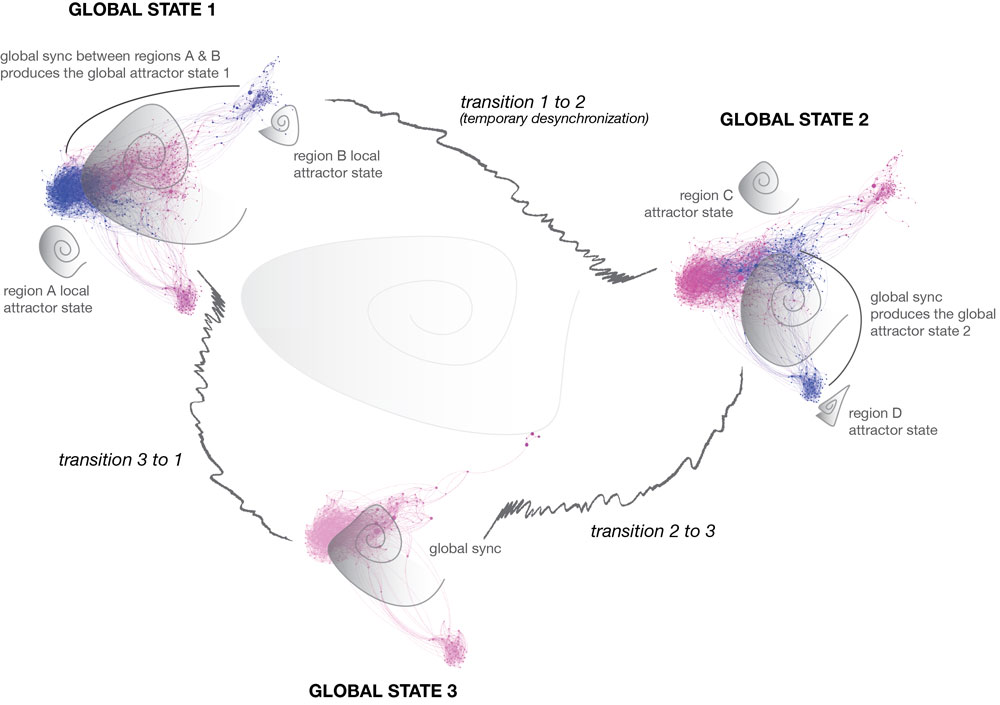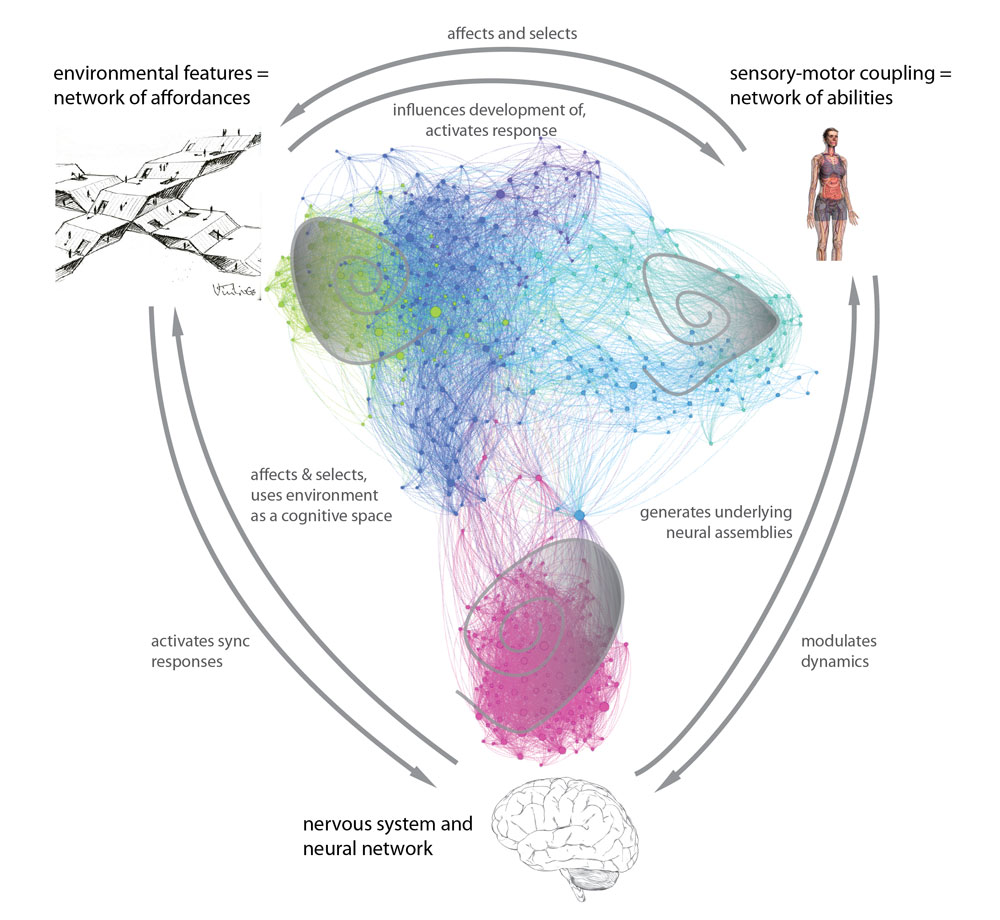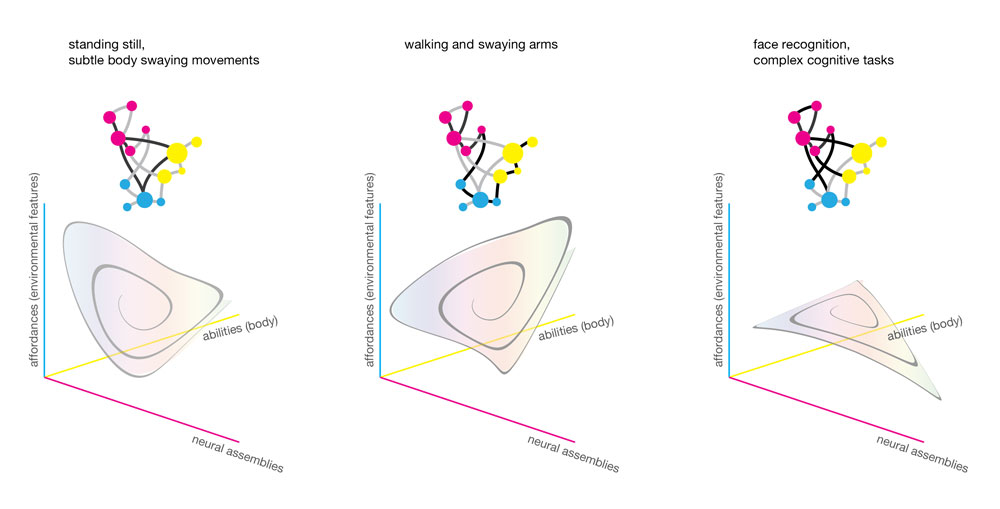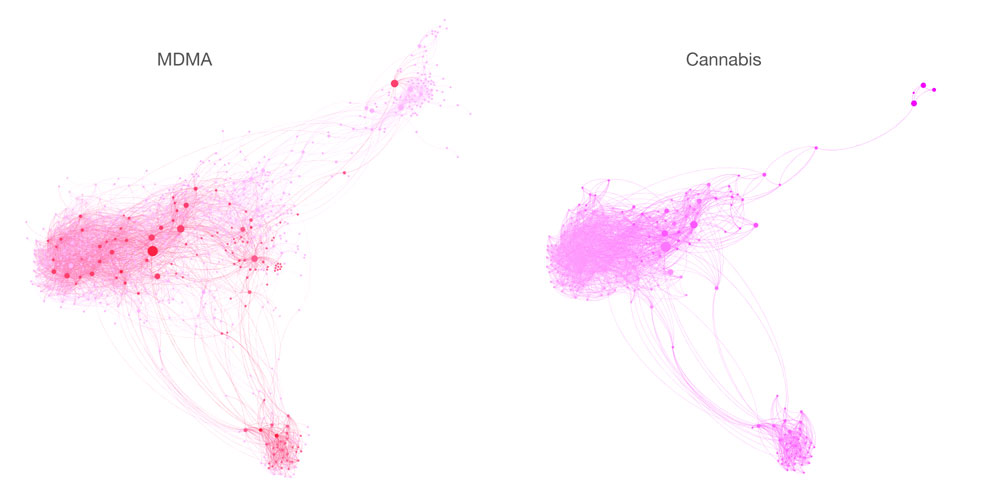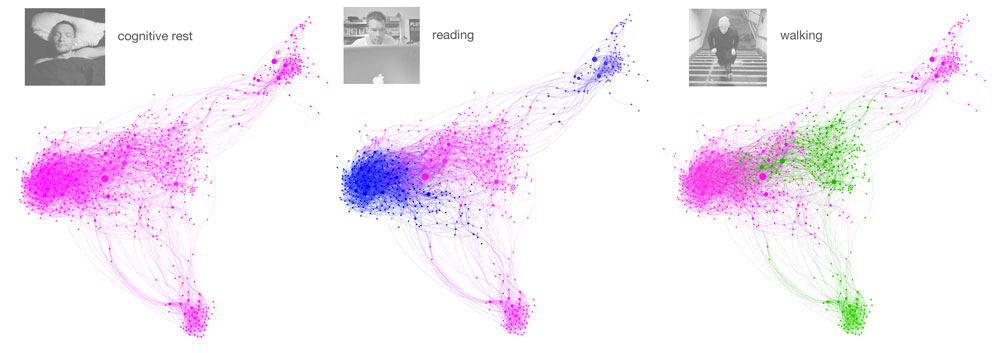Metastability of Cognition and Physical Presence
In this scientific article, published in 2012 by Nodus Labs, I present a review of the concept of metastability. I discuss its use in the framework of the human body and psyche, as well as its applications in psychology and cognitive science.
Many of the concepts presented in this paper were later implemented in EightOS bodymind operating system and cognitive variability framework in InfraNodus thinking tool. I’ve also been applying it a lot in my personal practice.
While working on this paper, I got inspired to apply dynamical systems theory to the study of bodymind. The main idea was that our psychological and physical conditions are defined by transient states each of which is very specific and activates certain circuits in our system. Therefore, there is no equilibrium but, rather, non-equilibrium stability that creates a certain pattern, which we then recognize as ourselves.
Moreover, every state is actuated on multiple levels: certain neuronal pathways activated with specific frequencies, physical body activity, affordances that are realized in the environment, the response of this environment — all of which form an open feedback loop system.
Each state is a basin of attraction, a pattern that we dynamically reaffirm over a period of time. An external impulse or an internal demand (e.g. lack of resources, desire), may trigger departure from this trajectory — a transient state, which may be identified as “uncomfortable” — until we reach a new basin of attraction, a new pattern that we settle upon. Our personality and physical state, therefore, consists of these basins of attraction, dynamic transient states, and cannot be viewed as a solid, frigid entity.
This approach has certain repercussions on practical ethics of our day-to-day behavior. Rather than seeking a fixed self-identification or a specific desired physical / psychological condition, we approach it as a sequence of states, which may at times even compete and contradict one another but generally tend to create a recognizable pattern over a certain period of time. We also view ourselves as a multidimensional entity which exists both on the inside and on the outside. Identity, in this case, becomes a much more fluid concept and we also enhance a range of tools that are available to us to modulate our state and explore the periphery of who we think/feel we are.
Date
July 25, 2012
Published In
2012
More Information
Category
Archive, Discourse, Medium, Methodology, Publication, Type, Urgency

